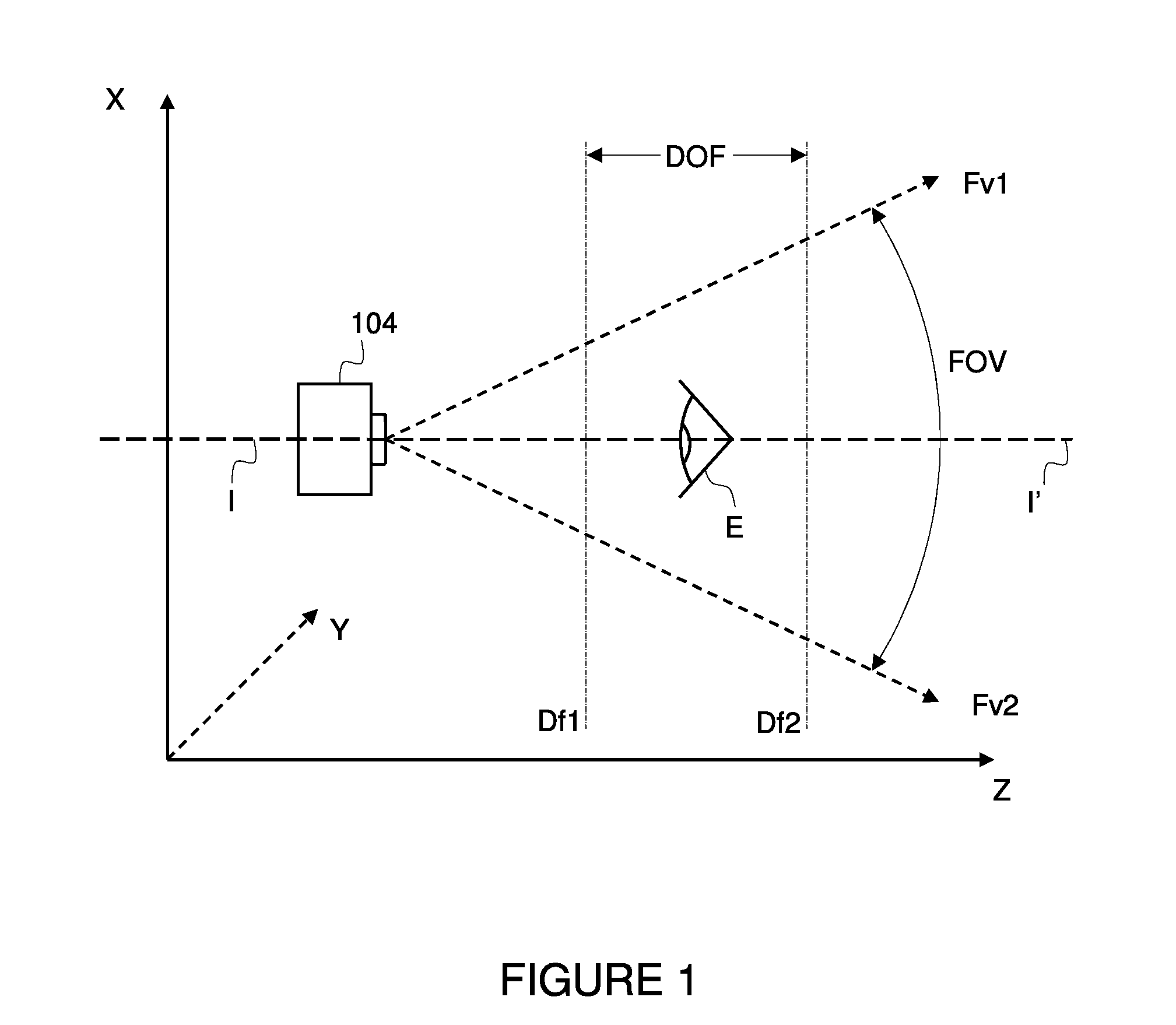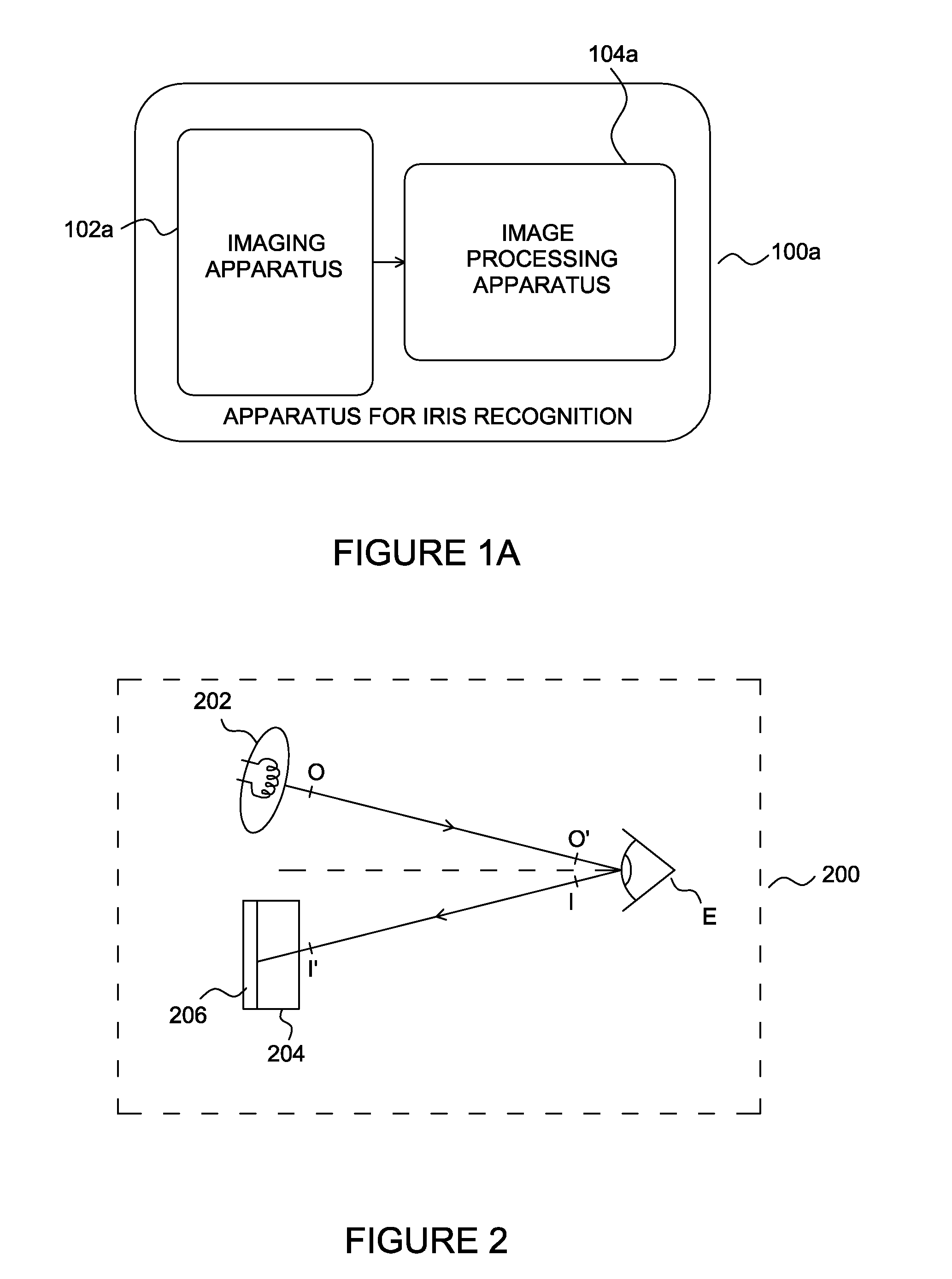Apparatuses and methods for iris imaging
a technology of iris imaging and apparatus, applied in the field of iris imaging apparatus, can solve the problems of increasing the cost of manufacturing of imaging apparatus, increasing the cost of imaging apparatus, and significantly increasing the cost of manufacturing of either solution
- Summary
- Abstract
- Description
- Claims
- Application Information
AI Technical Summary
Benefits of technology
Problems solved by technology
Method used
Image
Examples
Embodiment Construction
[0052]FIG. 1 illustrates some considerations for correct positioning of the subject's eye for image capture. As illustrated in FIG. 1, iris imaging camera 104 has a finite and fixed field of view FOV (i.e. the volume of inspection capable of being captured on the camera's image sensor). In FIG. 1, field of view FOV is the region defined by dashed lines Fv1 and Fv2. Iris imaging camera 104 additionally has a depth of field DOF—wherein depth of field DOF defines the region within which a subject's iris would appear acceptably sharp and in sufficient detail for the purposes of iris image capture. In FIG. 1, depth of field DOF is the region between dashed lines Df1 and Df2, along the z axis.
[0053]For image acquisition, subject's eye E is required to be positioned within the volume defined by the intersection of the field of view FOV and the depth of field DOF—which ensures that the acquired iris image has sufficient sharpness and detail. Portions of subject's eye E that remain outside t...
PUM
 Login to View More
Login to View More Abstract
Description
Claims
Application Information
 Login to View More
Login to View More - R&D
- Intellectual Property
- Life Sciences
- Materials
- Tech Scout
- Unparalleled Data Quality
- Higher Quality Content
- 60% Fewer Hallucinations
Browse by: Latest US Patents, China's latest patents, Technical Efficacy Thesaurus, Application Domain, Technology Topic, Popular Technical Reports.
© 2025 PatSnap. All rights reserved.Legal|Privacy policy|Modern Slavery Act Transparency Statement|Sitemap|About US| Contact US: help@patsnap.com



